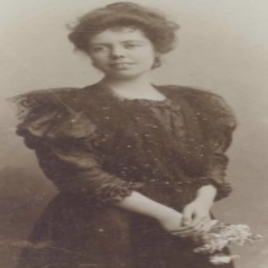The Impact on Poverty, Feminism as well as Feminist Themes Within Frederick Greenwood’s “The Gospel of Content”, as well as “The Yellow Book”
©Copyright 2022 Matthew Silva, Toronto Metropolitan University
Introduction
“The Gospel of Content” written by Fredrick Greenwood which is displayed in “The Yellow Book” displays many relevant themes regarding extreme poverty, and poverty filled conditions which influence the story. Furthermore, the text alludes to relevant themes regarding feminist writing as well as feminist themes, due to there being a key character represented a female, who is forced to face gender norms in an era and time in history which made it so difficult for a woman to survive without services provided by a male figure. For a portion in the text, the woman is forced to live and survive without her husband who was in trouble and believed to be imprisoned or even dead, while also having to care for their child. The importance and stature of women’s writing in “The Yellow Book” as well as potential biases and political and social views from the author of the text “Fredrick Greenwood”, it is very much possible that such contents in “The Gospel of Content” like the themes surrounding the impact of poverty and feminist writing in this era, may prove the text to be apart of a much bigger, and important ideology than what could be expected at first.
Frederick Greenwood
Frederick Greenwood is an English writer, and editor who authored and wrote “The Gospel of Content” within “The Yellow Book. Greenwood is also one of the two surviving editors of The Pall Mall Gazette. With what is already such vague biographical information on Frederick Greenwood as well as some of the contents of his life, it is evident that Greenwood took massive interest toward politics, being a member of a liberal-like political party in England. Moreover, as it is relevant in searching for his personal biases in regards to the themes of which he wrote upon throughout “The Gospel Of Content”, Frederick Greenwood along with his family grew up in extreme poverty like conditions.

Pellegrini, Carlo. “Frederick Greenwood.” National Portrait Gallery, 18 June 1880, https://www.npg.org.uk/collections/search/person/mp01897/frederick-greenwood
How It all Ties Together
As previously mentioned, themes surrounding poverty and feminism and feminist themes throughout writing are extremely clear throughout certain areas of the text. When trying to relate and find connections of these two very important themes and issues to biases as well as the overall personality of the author Frederick Greenwood, it is most effective to seek out how these themes relate to personal and political biases of Greenwood himself. Without a doubt, feminism and womens issues, along with poverty and the issues of which surround that particular crisis, are some of the most talked about issues still to this day. In addition to that, during the life of Greenwood and the particular setting of the text, these two issues were very much visible and problematic, and it could be argued that these issues were at even much worse points in these particular times. With that being said, it could be argued that Frederick Greenwood’s political views and experiences were vital in regards to the path and plot that “The Gospel of Content” displayed. As previously stated, Frederick Greenwood was a part of a more liberal leaning political party, which without much surprise, more likely than not felt much more compassion and care toward women’s issues as well as the fight against poverty. In regards to women’s issues and feminism throughout the story, the key female character in the text was mentioned to be one that took care of herself and her kid, without the help of a man. This female would also be feared by others. Without doubt, this idea of this character is one that defeats and challenges societal norms as well as sexist stereotypes revolving around female characters, by challenging the idea that a woman must be taken care of by a man, and can not survive without most of the services being provided by a man. The bias here is clear that Frederick Greenwood abides by an idea that women should and are perfectly capable of being able to prosper and provide for themselves and family, regardless of whether or not there is a husband or other male figure in the picture. In regards to the subject regarding poverty, as said before, Frederick Greenwood in his early years really struggled due to being in poverty and his participation in a liberal-leaning party could account and relate to his childhood experiences. Moreover, with so many particular areas of the story “The Gospel of Content” mentioning and showing displayed of extreme poverty, and also having poverty play into the plot and main idea of the text, it is clear that this could be in fact motivated from Greenwood’s past, with himself aiming to highlight the struggles that poverty can create for those whose only goals in life are to create a sustainable future.
Feminism and Women’s Writing Throughout The Course Of The Yellow Book
The late 19th century was a time where women’s writing started to become further popularized, and even though there was an attempt to put the ideas and creativity on women’s writing down, it was still able to flourish and create new perspectives of stories, as well as characters which are absolutely delightful and history defining. This was no different in regards to women’s writing throughout “The Yellow Book”. As stated by Heather Marcovitch in her article which alludes to the impact and importance of women’s writing throughout “The Yellow Book”, “It was a venue for the New Woman writers, the feminists of the fin de siècle who in their writing challenged romantic and marital conventions, promoted social emancipation and explored the subjectivity of the female artist.”(Marcovitch, 2016). The challenging of such massive stereotypes and norms of which have been oppressed on women in so many years such as marital conventions, social emancipations as well as the challenge of these women’s writers being able to express themselves freely ties into major themes revolving around “The Gospel of Content” by Frederick Greenwood. The marital conventions and social status revolving around the female character really relates to the ideas and goals in some of the writings across “The Yellow Book”, therefore possibly explaining the reason of why the text “The Gospel of Content”, by Frederick Greenwood was to be placed in “The Yellow Book” to begin with. When speaking of some of the ideas and new changes of which women writers brought to the table when attempting to write pieces in “The Yellow Book”, there is no one or nothing to look more forward to then the experiences of Netta Syrett, who was a female writer in “The Yellow Book”. In an article written by Jad Adams, Jad Adams states “Syrett’s work which was published from the 1880s to 1940 shows the drive for individuality and self-realization of young women at the end of the nineteenth-century… Her experience of the theater embodied the censorious attitude towards ‘daring’ plays by women which inhibited the progress of New Women’s writing for the stage… Syrett’s life gives insights into the women’s clubs which developed to serve the new cohorts of women’s writers and other professionals.” (Adams, 2019). This example also alludes to how monumental and shifting women’s writing was in the late nineteenth century, and how it played toward how much things shifted, particularly in relation to female characters and the types of new roles and experiences of which were now being taken to by women’s writers and even characters.

Wojciechowski, Miranda. “Syrett, Netta, 1865-1943.” Mapping Victorian Literary Sociability, 1939, https://victorians.ucalgary.ca/people/syrett-janet/
Conclusion
“The Gospel of Content”, although written by a male author in Frederick Greenwood, does indeed encompass many new trends such as the fight back of societal and gender norms in nineteenth century writing, which not only alludes to the biases and past life of the author Fredrick Greenwood, which has been discussed in detail, but also does indeed align with trends regarding new waves of women’s writing throughout the course of “The Yellow Book”. Furthermore, when discussing the relevancy in such research, it is important to mention how important political biases of the author, as well as how it is related to the scenarios of which the writing of the book “The Gospel of Content”, can be apart of a much bigger, and history changing picture, such as the challenging of societal norms, as well as gender norms and other very important societal and political issues, which in this case was related to the issue surrounding poverty. In addition to that, the entirety of “The Yellow Book”, as well as the motivating factors behind some of the stories and their themes was without a doubt a massive contribution to seeking potential themes and reasonings behind why some of the issues of which were mentioned throughout “The Gospel of Content” were made in the first place, being that the story itself was already extremely complex and eventful to say the least. With that being said, it is not only extremely possible, but very much likely that all of these key and contributing factors was what intrigued Fredrick Greenwood to create a piece in “The Yellow Book” which challenged societal norms, and also labeled important issues that he himself could have felt really connected to due to his personal biases and experiences.
Works Cited
Robertson Scott, J.W. “Frederick Greenwood.” Notes and Queries, vol 189, issue 6, Sep, 22, 1945, pg 129.
Marcovitch, Heather. “The Yellow Book: Reshaping the Fin de Siècle.” Literature Compass, vol. 13, no. 2, 2016, pp. 79-87. One Compass Many Directions
Adams, Jad. “Netta Syrett: A Yellow Book Survivor.” English Literature in Transition, 1880-1920, vol. 62, no. 2, 2019, Project Muse
Pellegrini, Carlo. “Frederick Greenwood.” National Portrait Gallery, 18 June 1880, https://www.npg.org.uk/collections/search/person/mp01897/frederick-greenwood
Wojciechowski, Miranda. “Syrett, Netta, 1865-1943.” Mapping Victorian Literary Sociability, 1939, https://victorians.ucalgary.ca/people/syrett-janet/
Greenwood, Frederick. “The Gospel of Content.” The Yellow Book, The Bodley Head Publishing House, 1894. 11-34
Images in this online exhibit are either in the public domain or being used under fair dealing for the purpose of research and are provided solely for the purposes of research, private study, or education.
